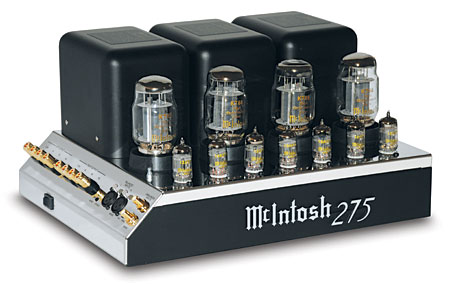This is a review and detailed measurements of the Carver Raven 350 tube monoblock amplifier. It is on kind loan from a member and (I think) costs US $4,750.
View attachment 225095
The 350 is not a bad looking amp. It has the same "orange peel" paint job of the previous
Carver 275 amplifier I reviewed. At 42 pounds, the unit is pretty heavy. With all the weight in the back, the front handle is kind of useless when it comes to lifting it.
View attachment 225100
There is an XLR input but I believe it is for convenience and performs the same as RCA. I measured the DC resistance of the 4 and 8 ohm terminals (after the measurements) and realized they are both the same! Here I was switching back and forth between them.

Anyway, measured DC resistance is 0.47 ohm. The 1-2 ohm tap has a lower DC resistance of about 0.3 ohm.
Unlike the 275 amplifier, the fuses did not blow and the amp survived my sweep tests. Bias is to be set at "80" on the front dial and that was the case when I powered on the unit.
There is a gain control but you are advised to set it to max which is what I did for testing.
There is a flip switch in the front which changes the amount of feedback. I tested the amp in both settings.
Here are the specs:
View attachment 225121
Carver 350 Measurements
Let's start with high-feedback performance using XLR input:
View attachment 225102
There is copious amount of distortion causing SINAD to be dominated by it. At 44.1, it ranks as the second worst amplifier ever tested:
View attachment 225104
It even performed worse than the Carver 275 which had a SINAD of 46. Switching to lower feedback doesn't make things that much worse:
View attachment 225106
Note that gain is reduced and therefore, volume will be different. This makes AB testing tricky. Here is a more detailed FFT showing the small difference between low and high feedback:
View attachment 225115
Notice how distortion is made up of both 2nd and 3rd harmonics so you can't make the argument that it is "2nd harmonic goodness."
As noted, RCA performance is the same as XLR:
View attachment 225107
Power supply 60 Hz noise in both cases causes severe intermodulation higher up in frequency. No amount of grounding impacted that so it is endemic tot he design.
Noise performance is decent for type of amp it is:
View attachment 225108
Intermodulation distortion rears its ugly head again in multitone test:
View attachment 225109
I don't know how anyone could hear more "detail" with such an amp where so much of the music signal will get lost in the distortion "grass."
Frequency response should be flat but it is not:
View attachment 225110
It naturally will have load dependency due to output impedance.
Let's see the power situation as we had serious shortfall in the 275 amp:
View attachment 225111
We don't meet the spec there but come closer with 8 ohm:
View attachment 225112
Back to 4 ohm, here is our 1% THD (double the company spec) max and burst power:
View attachment 225113
We seem to get the same shortfall. There is momentary reservoir though allowing the peak output to shoot way up. This was not always consistent though.
I also tested 2 ohm capability:
View attachment 225114
You are still current limited so no more power.
Changing the test frequency gives us the following power curves:
View attachment 225116
There is some instability at 20 Hz and fairly significant power drop. This points to power supply not having enough capacity as the lower frequency taxes it for longer period. Some drop occurs in every amplifier by the way so it is a matter of how much.
Finally, the amplifier warms up quickly and is pretty stable:
View attachment 225117
Testing occurred after this warm up.
Conclusions
What an upside down the world of audio is. Folks want to pay so much more to get dirtier sound. You want dirty? The Carver 350 gives it to you. Even at 5 watts there is copious amount of harmonic distortion. Power supply mixes with that at such high level that it creates its own spread of distortion. A video must come with these amps that hypnotizes you into thinking you are getting great sound....
I can't recommend the Carver 350 monoblock amplifier.
-----------
As always, questions, comments, recommendations, etc. are welcome.
Any
donations are much appreciated using
: https://www.audiosciencereview.com/forum/index.php?threads/how-to-support-audio-science-review.8150/


